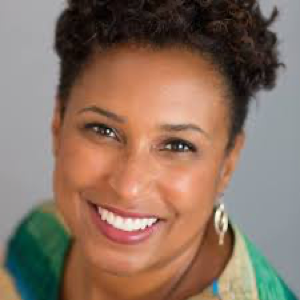Closing the Gap: Charting the Path Forward for Women@Work

The challenges women at work face are well-known, and progress addressing them has been slow. Here's what was discussed at the panel, "Charting the Path Forward for Women@Work," which was held on May 25, 2021, as part of ADP's Women@Work virtual summit.
Women at work face many unique challenges. In addition to earning less than men, on average, there aren't as many women in executive positions, and women often take on a larger share of family responsibilities like childcare.
While there has been some progress in addressing these inequities, forward movement has been slow, and the global pandemic has reversed some of the progress as a disproportionate number of women have left the workforce to attend to family responsibilities. Immediate action is needed to recover from these losses and shape a more inclusive, equitable future for women.
This was just one the important topics discussed at the Women@Work Summit, hosted by ADP on May 25, 2021. Over the course of the online event, speakers and attendees shared their hopes and thoughts about meaningful change — as well as their ideas and insights for putting plans into action.
During the panel discussion "Charting the Path Forward for Women@Work," Cate Luzio, founder and CEO of Luminary, asked hard questions of panelists Martha Bird, Chief Business Anthropologist at ADP; Teri Dennis-Davies, Senior Vice-President of Equity, Diversity and Inclusion (ED&I) for Maple Leaf Sports and Entertainment (MLSE); Mark Greville, Vice President of Architecture at Workhuman; and Allison Robinson, Founder and CEO of The Mom Project.
Their answers and thought-provoking perspectives offer inspiration for organizations looking to tackle inequities regarding women at work.
Organizations are Stepping Up to Help Women Return to Work
Millions of women have left the workforce in recent years, especially single mothers and women of color. However, according to Robinson, businesses are increasingly committed to helping women return to work. "Moms make incredibly productive, diverse, equitable leaders," she said. "Coming out of the pandemic, we're seeing companies betting on moms at a level that we've never seen before."
In past years, The Mom Project worked with organizations who wanted to offer a few positions via internships or pilot programs. Now, Robinson said, businesses are committing to programs that aim to bring thousands of women back to the workforce.
Leaders are Looking at Their Role in Influencing Change
Organizations in the sports entertainment industry are historically male-dominated, but they can also play a role in charting a path for women at work.
"Not only are we looking to make our own workplace more inclusive for women to increase the representation of the types of leadership roles women have, but also to increase our influence on gender representation," Dennis-Davies said. "Even all-male teams should consider how they create space for women to advance their leadership roles and have mentorship and sponsorship opportunities."
What's most refreshing, she said, is when everyone around the table calls out an opportunity for a practice or policy to be more inclusive. That shows that the commitment is embedded.
Many Organizations are Starting from Scratch
It's not as though the problem of equity for women at work hasn't been considered — some organizations have spent years focusing on inclusion efforts. However, more needs to be done.
There are many new businesses, from small entrepreneurs to multinational organizations, that are currently building their equity and inclusion strategies from scratch. Luzio asked the group for their thoughts about the easiest way to better represent women at work.
Bird noted that the simplest approach is to start by asking what the problems are. "Where are the bumps in the road? Solicit the opinions of those that you are seeking to include. A lot of times, we jump ahead and don't start with those basic fundamental blocks," she said. "This can be done by connecting with affinity groups or using a survey. Having a person-centric approach is absolutely critical to getting your mind wrapped around what the actual issues are instead of hypothesizing what they might be."
It Takes More Than Talk to Close the Gap
It's not enough to say that women at work need equal opportunities to close the gap. Organizations must be intentional in their actions. "You need to actively listen across the spectrum and give voice to people who don't necessarily have a voice all of the time," said Greville.
Dennis-Davies agreed that intentional listening can unveil issues leaders never considered. For instance, a survey revealed that employees thought the assignment of desks and offices reflected gender imbalance, with men assigned exterior desks and offices and women assigned interior ones. "We're conducting what we call 'roadshow sessions' and talking with employees about the results to get direct feedback about why there might be a gap in the employee experience and how we could start to address some of those systemic barriers," she said.
However, bias can be nuanced, as the MLSE survey results highlighted. Accordingly, organizations must look at symbols, logos and even metaphors it uses that could perpetuate bias. "There are so many ways in the structure that bias can seep in," Bird said. "It's not intentional, but it's worth bringing to the surface."
A Mindset Shift is Required Regarding Productivity
The current debate around remote work is another critical aspect that needs to be addressed. Whereas some organizations still think employees need to be in the office to be productive, it's an idea that is becoming outmoded due to technology. This can be seen as progress, as the old perception adversely affected women.
Bird noted that leaders need to trust their high performers. "There's a feeling that, 'If I'm not in the office, people think I'm not doing anything,' and that's a particularly strong issue for women," she said.
Businesses are progressing in this area, Robinson suggested. In years past, women were trained not to talk about personal responsibilities in interviews, which exacerbated the motherhood penalty.
"Now, we're trending the other way. Companies are getting very real about what their employees are dealing with outside of the workplace," Robinson explained. Organizations looking for ways to help employees be more productive are now offering greater flexibility and additional benefits around family planning or mental health. "Employers have stepped up to help employees manage all of these different aspects of their lives, and it's really refreshing," she added.
What's Really Required from Male Allies
Allies are an essential part of change, but being a male ally involves more than expressing support for women at work. "Saying you're an ally is the bare minimum," Greville noted. "It's really important as a man to be active — to take action — and I will suggest to every man who is listening to take action. Do something. No matter what level you are, you can do something, whether it's changing the hiring policy or being the voice for people who are not in the room."
Changing Culture to Create a Better Path
So much of what the panelists discussed came down to the need for change in organizational culture, said Luzio. Focusing on only one area won't yield significant progress, and fortunately, organizations recognize that.
"Early on, we had to explain what gender equality was and why companies should care," Robinson said. "Now, it's the 'how,' and a lot of companies have signed up for some pretty impressive DE&I goals."
Supporting women doesn't come down to creating unfair advantages, Bird noted. "But it most certainly should come down to dismantling unfair disadvantages."
Interested in learning what else was discussed during the Women@Work Summit? You can watch the entire program on demand.



